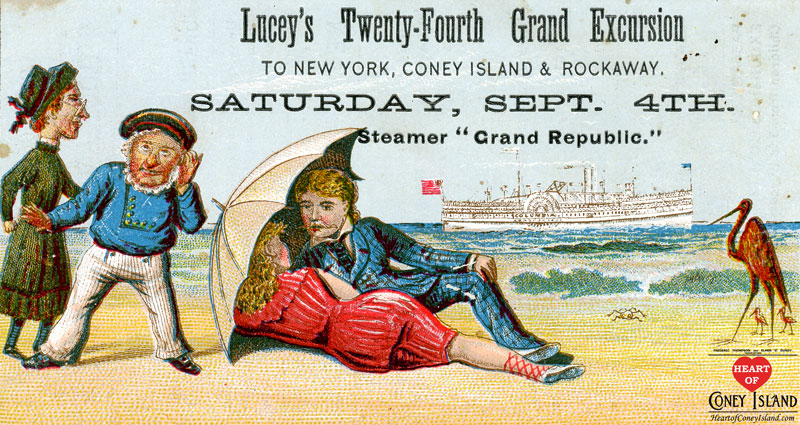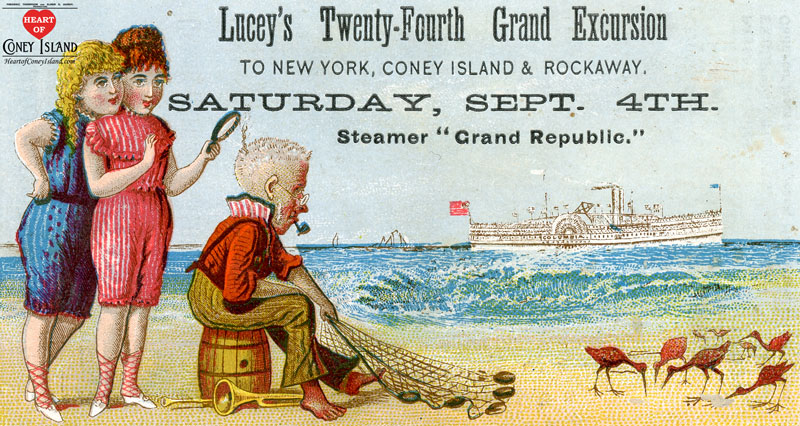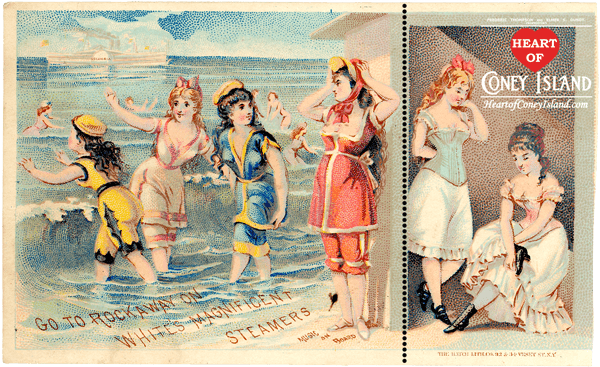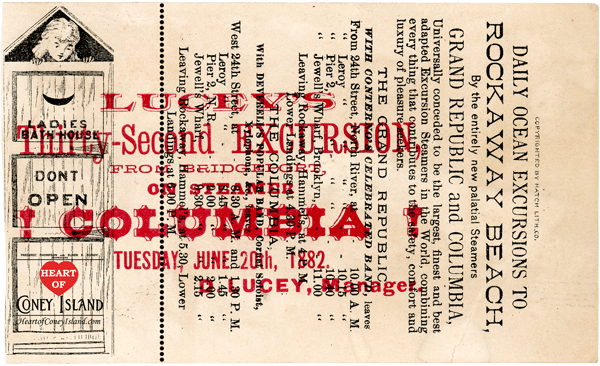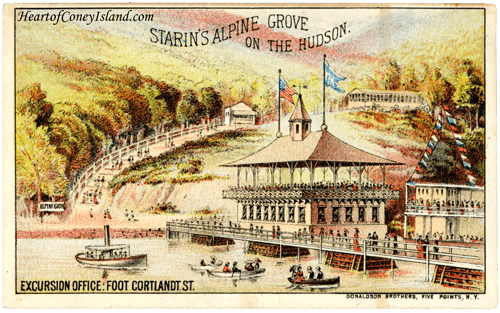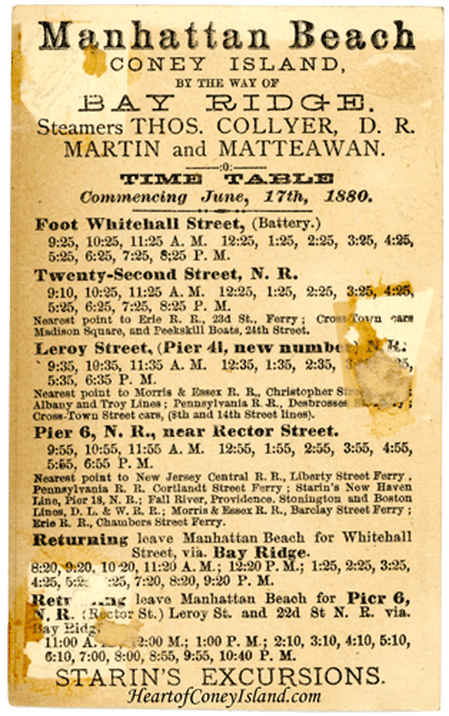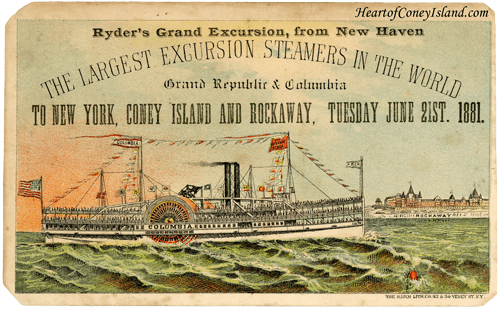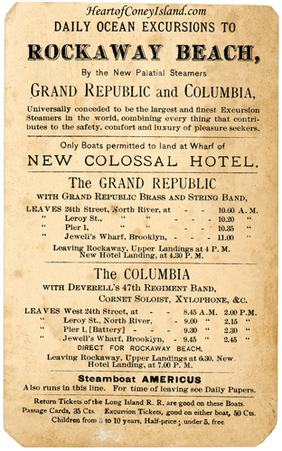Coney Island History: Steamboat Transportation to Coney Island
In the late 1800s and early 1900s, all mass advertising was printed, because radios weren't household items until the early 1920s. Companies would advertise in magazines, on billboards, on posters that would be pasted around town, or on flyers that could be handed on. The flyers, called trade cards, generally were printed on paper the size of postcards, which at the time were 3.5" x 5.5". Most had a picture on the front and information on the back.
Lucey's Steamboats
Victorians loved puns and silly one-liners. Around 2006, a circus clown's jokebook from the early 1870s was discovered and contained zingers like: "What's the difference between a boat and Joan of Arc? One is made of wood, the other is Maid of Orleans!"
Most Victorian trade card advertisements had a pretty picture on the front side and facts about the product on the reverse. The picture could be of the actual item or service offered, a famous personality, or just a pretty decorative picture. The reverse might list the benefits of using a product, or be a train schedule or describe what bands would play on a steamship.
Lucey's Steamers took a much more interesting approach, choosing to advertise through humor. The trade card below is particularly silly (and racy for the times) and illustrates Victorian humor. The card would have been folded forward along the dotted line such that the black-and-white image of the bath house (saying "Don't Open") would have shown on the front. Opening the bath house by flipping the card back would reveal the two ladies changing in the bath house. Have all the fun you want with this card, but just don't be looking at it during Sunday mass!
Most Victorian trade card advertisements had a pretty picture on the front side and facts about the product on the reverse. The picture could be of the actual item or service offered, a famous personality, or just a pretty decorative picture. The reverse might list the benefits of using a product, or be a train schedule or describe what bands would play on a steamship.
Lucey's Steamers took a much more interesting approach, choosing to advertise through humor. The trade card below is particularly silly (and racy for the times) and illustrates Victorian humor. The card would have been folded forward along the dotted line such that the black-and-white image of the bath house (saying "Don't Open") would have shown on the front. Opening the bath house by flipping the card back would reveal the two ladies changing in the bath house. Have all the fun you want with this card, but just don't be looking at it during Sunday mass!
Starin's Steamboats
|
The History of Brighton Beach article describes how vertical integration by railroad companies into hotels was commonplace as a means of driving railroad traffic to a captive destination. John Starin took this concept to a whole other level.
A wealthy landowner through inheritance and a successful businessman on multiple front, Commodore Starin (as he was known) owned a flotilla of at least twelve steamships and over one hundred and fifty smaller ships. This made buying an island near Pelham Bay and building a theme park on it seem like the perfect idea. It actually turned out to be, attracting hundreds of thousands of visitors a year. Both Wikipedia (overview) and Historic Pelham (detailed) (click on either for the link) have very good articles on Starin's Glen Island Resort. The trade card above gives the schedule for three of his steamers to Coney Island. Others went to New Haven or Starin's other properties. The Collyer was considered, along with the Mohawk and a ship he humbly named after himself, the nicest steamships in his fleet. Starin's Alpine Grove likely was another Starin retreat. |
Ryder's Steamboats
|
Travel to Coney Island in style on a steamship with a band on board! One thing to note is that this card has retained great color for being so old. The vibrant reds are particularly nice, given that they usually are the first color to fade on paper items. Also note in the schedule that the North River was another name for the Hudson River along Manhattan's west side. These steamships traveled from Manhattan to Brooklyn.
|
Return to Coney Island History Homepage

